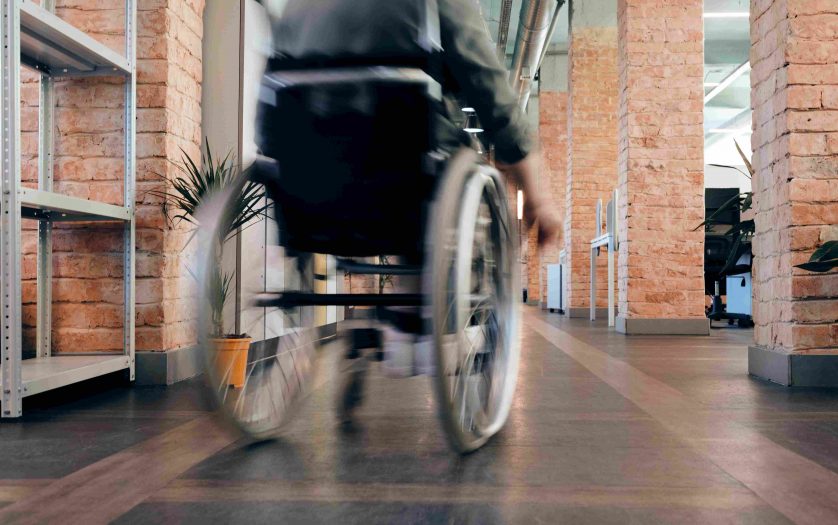A guide to creating an accessible bedroom

If you or your loved one requires an accessible home, you likely already know the challenges of finding the perfect space to meet the needs of a person living with a disability. According to the American Apartment Owners Association, there is a critical lack of affordable, accessible housing for individuals with disabilities.
Disability Insider is committed to providing individuals with disabilities and their families with the information they need to overcome obstacles like this. If you can’t find a home with an accessible bedroom for your loved one—create it! This guide explains how to put together a bedroom that will meet basic accessibility needs.
Plan the structural elements first
Tackle structural remodeling first. Is there carpeting that can get in the way of a wheelchair or walker? Replace it with hardwood flooring. Are the doors too narrow to let a wheelchair through? Get them widened. According to Pride on Wheels, a wheelchair-accessible doorway is at least 32 inches.
Depending on the extent of renovations required, you may want to work with a general contractor. They can ensure that the changes are carried out in a way that doesn’t negatively impact the structural integrity of the building. You can use interior design software to visualize the project before getting started. House Beautiful has a list of technologies you can check out, like SmartDraw and FloorPlanner.
Figure out how to finance your remodeling
Once you’ve talked to a general contractor and drawn up a floor plan for your bedroom remodel, you should have a better idea of what the project will cost. Be forewarned, that home renovations can get pricey. Also, keep in mind that you need to make room in your budget for accessible furniture.
How will you pay for it all? Don’t worry. There are a number of helpful resources available. The National Access Corp provides a comprehensive guide to financing options for accessibility renovations, including credit cards, loans, Medicaid/Medicare, and government assistance. The Balance offers another useful list of grants for specific groups like rural homeowners and veterans.
Another option is to refinance your mortgage. PennyMac refi allows you to replace your existing mortgage with a new loan. You may even be able to get a lower interest rate, depending on your situation. Do your research to ensure you understand how refinancing works and always read the fine print before signing on the dotted line.
Equip the bedroom with accessible furniture
Once you have the structural component of your remodeling project completed, you can move on to furnishing the space. Common additions to help accommodate persons with disabilities include handrails, door handles that open lever-style instead of turning, and easy-open closets, wardrobes, and cupboards.
For persons who use wheelchairs, it’s important to keep height requirements in mind. The surfaces of nightstands, beds, wardrobes, and other furniture must be low enough that the individual can easily reach them. Technological additions like a smart assistant can also make day-to-day life easier for those with limited mobility. TechRadar has a roundup of the latest smart gadgets.
Finally, an electric bed is an excellent investment for any accessible bedroom. This allows for the height and headboard to be adjusted, making it easy to get in and out of bed and sit up in bed as needed. The Sleep Foundation offers a guide to electric beds designed to meet diverse needs and price points.
Creating an accessible bedroom requires an investment of energy and money. However, it will be well worth it. Everyone deserves to have a cozy sleeping space where they can relax.
Featured Stories
-
 Beyond awareness – Developmentally disabled people need protection
Beyond awareness – Developmentally disabled people need protection
-
 Limiting the vote for individuals with intellectual disabilities is limiting democracy
Limiting the vote for individuals with intellectual disabilities is limiting democracy
-
 Embracing your identity: Learning to live and thrive with a disability
Embracing your identity: Learning to live and thrive with a disability
-
 I finally got hearing aids at age 26, after a lifetime of feeling stigmatized
I finally got hearing aids at age 26, after a lifetime of feeling stigmatized
-
 Preparing for the parenting life when you have a disability
Preparing for the parenting life when you have a disability

